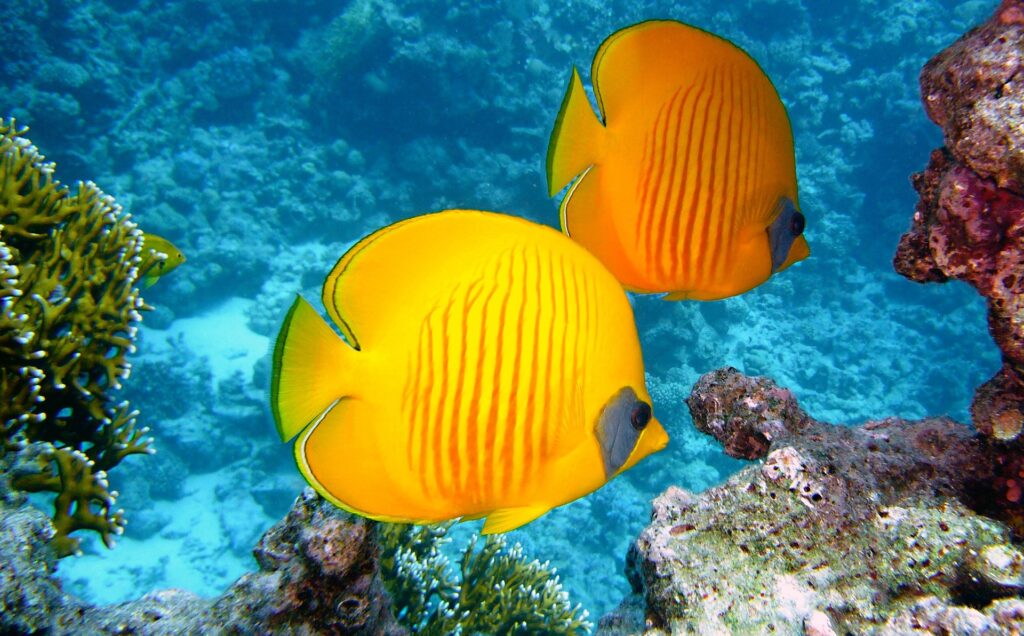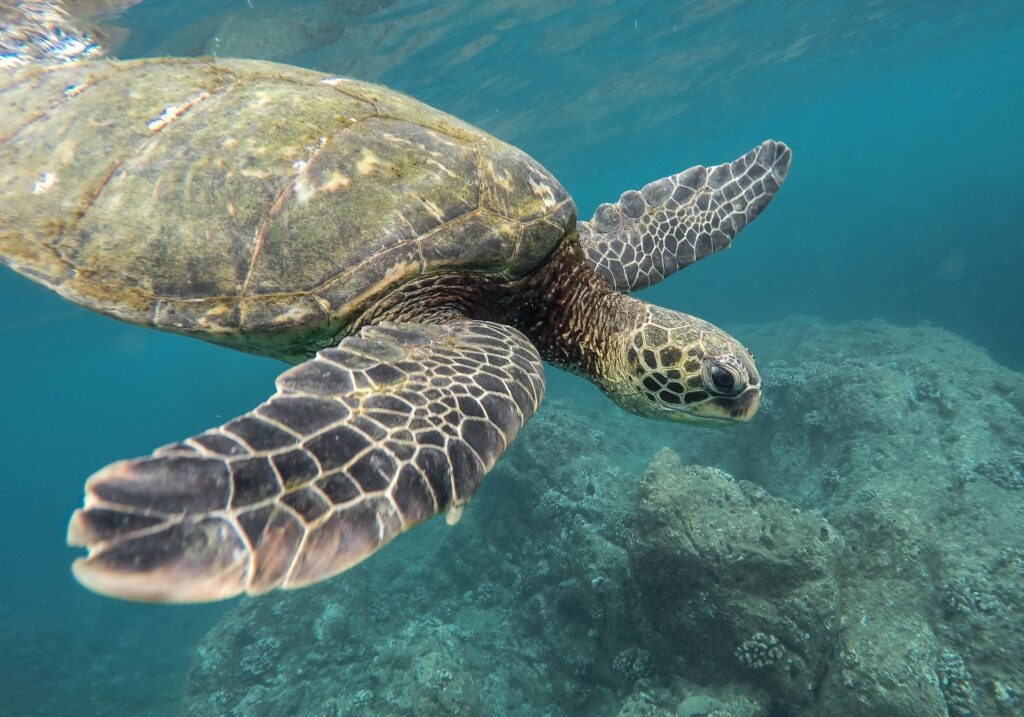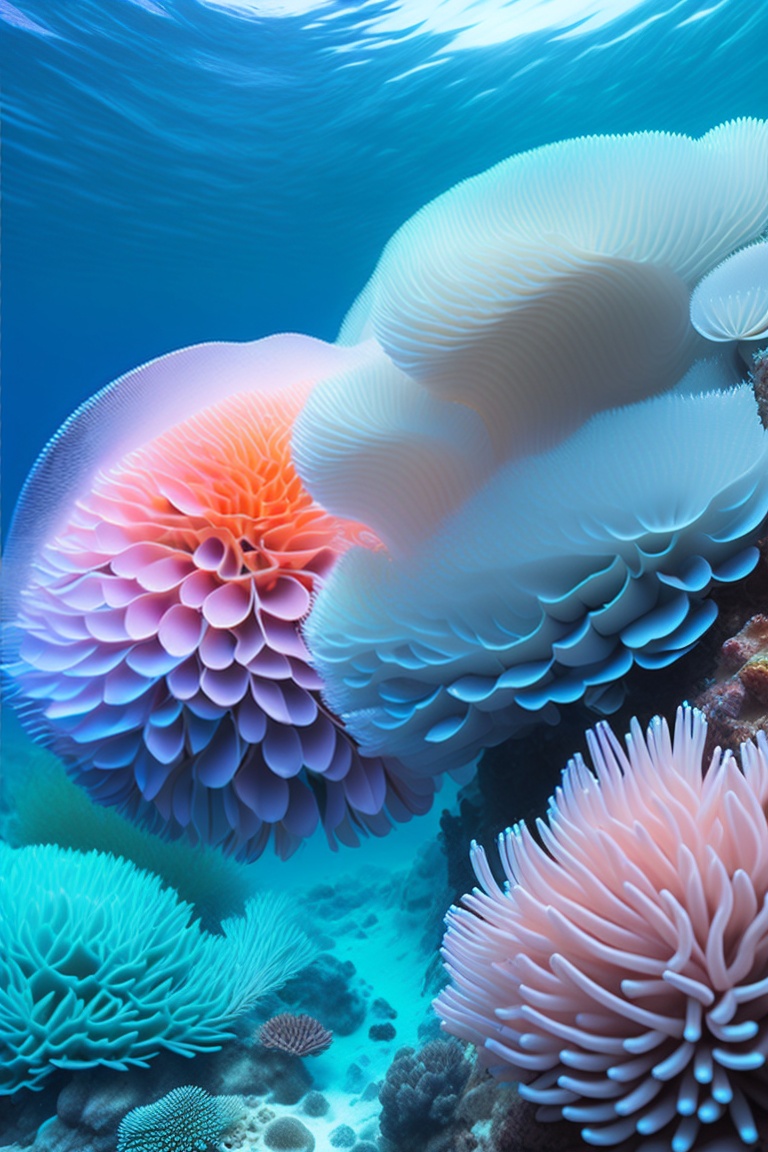What is Coral Bleaching: Introduction
Hello there, ocean whisperer! You’re here because you love the sea and its inhabitants, aren’t you? Or maybe you just watched a documentary about corals and are left scratching your head about this peculiar term – coral bleaching. And now, you’re brimming with curiosity, asking yourself: why do those vibrant coral reefs, the bustling underwater cities, sometimes transform into ghostly white graveyards? Did they see a ghost? Or perhaps they’re playing dress-up for an underwater Halloween party? Nope, none of those are the answers. It’s something more critical and more intriguing – a phenomenon we commonly call coral bleaching. But fear not, fellow ocean enthusiast! Our journey into the colorless world underwater will enlighten you with everything you need to know about this curious event and answer the question: “What is coral bleaching?”
Coral 101: A Quick Glance
Understanding Corals
Before we dive deeper (no pun intended), let’s get some basics straight. Corals are not just colorful underwater knick-knacks. They are the skyscrapers of the ocean floor, teeming with life and vibrant activity. Yes, you heard right! Corals are actually living organisms, not too different from you and me. Well, except they’re anchored to the seafloor and look a lot funkier. Think of them as the high-rise condos of the sea, hosting a diverse variety of ocean critters, from the tiniest plankton to the most colorful fish you could ever imagine. In essence, a coral reef is like the New York City of the ocean – always bustling, always alive.
Importance of Corals
It’s easy to marvel at the beauty of coral reefs, but their role goes far beyond being mere eye candy. Let’s put it this way, without corals, our friend Nemo and his fellow aquatic buddies would be homeless, looking for a new Airbnb under the sea. But that’s not all! Corals serve as the first line of defense against tropical storms, reducing wave energy and preventing coastal erosion. It’s like having a huge bouncer at the door of the marine ecosystem’s nightclub, keeping the unruly weather patterns at bay. Now, wouldn’t you agree that corals are much more than just underwater decorations? They’re the guardians of the ocean, making life easier (and safer) for a lot of creatures, including us humans. So, the next time you see a coral, don’t just say ‘pretty’; say ‘pretty awesome’!
The Mystifying Process of Coral Bleaching
The Causes
Alright, now that we’ve admired the beauty and significance of corals let’s get down to business. What turns these vibrant neighborhoods into colorless, ghostly landscapes? What could possibly stress them out? It’s not like they have bills to pay or work deadlines to meet, right? Well, their stressors are a bit different from ours. They get all worked up when the conditions around them get a bit too uncomfortable. Things like spikes in ocean temperature, extreme low tides, pollution, or overexposure to sunlight can make corals go, “Okay, this is too much, we need a break!”
The Process
Corals and the tiny, photosynthetic algae known as zooxanthellae share an apartment in the coral tissue, where they’ve been living in perfect harmony for thousands of years. It’s an ideal roommate situation – the corals provide shelter and carbon dioxide for the algae, while the algae, in return, supply oxygen and help the corals remove waste. Not to mention, they are the ones that give corals their flamboyant colors. But when the ocean temperature increases, it’s like a nasty argument that breaks out between the best friends. The stressed corals evict the algae, leaving the corals transparent and revealing their white skeletons underneath, hence the term ‘bleaching’. Imagine having to kick out your best friend because of a heatwave. Bummer, right?
What is Coral Bleaching: Unveiling the Impact
On Coral Communities
Coral bleaching doesn’t just rob the corals of their color and aesthetics. The impacts are far-reaching, more than our human minds can fathom. For starters, when corals bleach, it’s like throwing a monkey wrench into the gears of a well-oiled machine. The bustling city of marine life that once thrived begins to dwindle. Fish populations, which heavily depend on coral reefs for food and protection, can decline or even vanish. Think of it as an underwater apocalypse, where the loss of one species triggers a domino effect.
On the Marine Ecosystem
And the ripple effect doesn’t stop at just the marine life. Coral reefs are an essential component of the marine ecosystem. Picture them as the heart of the ocean. When corals bleach and eventually die, it disrupts the balance of the entire marine ecosystem. It’s like removing the heart from a body. What happens then? The body can’t function, right? That’s exactly what happens to the marine ecosystem without healthy coral reefs.
On Humans and the World
Let’s take it a step further. Coral reefs are not just critical to marine life; they are indispensable to human life as well. Consider this – coral reefs, despite covering less than 1% of the ocean floor, harbor about 25% of marine species. In essence, they are the underwater equivalent of Amazon rainforests. Now, imagine the impact of losing such hotspots of biodiversity. The potential sources of new medicines, the base of the fishing industry, and the backbone of the tourism sector – all gone! Makes you think twice about the gravity of coral bleaching, doesn’t it?

Challenges and Ongoing Concerns for Coral Reef Conservation
Now, let’s get real about the challenges that coral reefs still face, even with the awesome efforts we’ve seen from countries like Australia, the Maldives, Belize, Hawaii, Indonesia, the USA (Florida Keys), and Caribbean nations. While these nations are doing some great work, the coral reef conservation journey isn’t all smooth sailing. Here are the ongoing concerns:
Australia: The Great Barrier Reef
Australia’s efforts to protect the Great Barrier Reef are substantial, including the implementation of the Reef 2050 Plan. This comprehensive strategy aims to address water quality issues by reducing agricultural runoff, improving wastewater treatment, and promoting sustainable land management practices. Additionally, Australia has invested in coral nurseries to propagate resilient coral strains and bolster coral populations. Despite these efforts, the Great Barrier Reef continues to experience severe bleaching events primarily due to rising sea temperatures linked to global climate change. This underscores the urgent need for global climate action, as local measures alone may not suffice to ensure the reef’s long-term survival.
Maldives: Protecting Coral Reefs through Tourism
The Maldives, known for its stunning coral reefs, has taken steps to minimize the environmental impact of its tourism industry, which heavily relies on these ecosystems. Regulations have been implemented to restrict anchoring near reefs, promote responsible diving practices, and reduce the use of harmful sunscreens. While these measures help mitigate immediate threats to coral health, the nation remains vulnerable to coral bleaching events driven by rising sea temperatures. The Maldives’ challenge is to balance economic development through tourism with the imperative of preserving its valuable coral ecosystems.
Belize: Barrier Reef Resilience
Belize has established stringent regulations to protect its Barrier Reef Reserve System, including marine protected areas and fishing restrictions. These measures aim to reduce local stressors such as overfishing and pollution, which can exacerbate coral bleaching. However, Belize is not immune to the global threats of climate change and ocean warming. Despite its conservation efforts, the region remains susceptible to the long-term impacts of rising sea temperatures, highlighting the need for a coordinated global response to address climate change and coral reef conservation.
Hawaii: Coral Restoration
Hawaii’s commitment to coral restoration is evident through initiatives like coral nurseries and transplantation programs. These efforts aim to restore coral populations and enhance their resilience. However, Hawaii faces recurring bleaching events due to climate change, which poses a significant concern for its coral reefs. Despite local restoration endeavors, the state grapples with the challenge of mitigating the broader impacts of ocean warming and ocean acidification, necessitating comprehensive climate action at the global level to protect its precious coral ecosystems.
Indonesia: Coral Triangle Conservation
Indonesia, located in the Coral Triangle, is home to some of the world’s most biodiverse marine ecosystems, including Raja Ampat and Komodo National Park. While the country has made strides in coral conservation, it faces the delicate task of balancing conservation with economic development and tourism. Sustainable practices and marine protected areas are critical, but they must coexist with the economic needs of local communities. Indonesia’s challenge lies in achieving this delicate equilibrium while safeguarding its exceptional coral reefs against climate change and other threats.
Florida Keys, USA: Local Initiatives
The Florida Keys have implemented local initiatives to mitigate coral bleaching, such as coral restoration projects, marine protected areas, and regulations on coral collection. These efforts are crucial for reef health. However, the region grapples with ongoing water quality issues, including pollution and nutrient runoff, that can exacerbate coral stress. Additionally, threats from climate change, including sea-level rise and hurricane damage, persist. While local initiatives are essential, they must be integrated into broader strategies to address climate change and ensure the long-term resilience of the Florida Keys’ coral ecosystems.
Caribbean Nations: Regional Cooperation
Caribbean nations have come together to address the common challenges of coral bleaching, which include overfishing, pollution, and habitat degradation. Regional alliances and initiatives aim to coordinate efforts in research, conservation, and management. However, these nations must strike a balance between the economic benefits of tourism and fishing and the need to protect their reefs. Furthermore, the Caribbean remains vulnerable to climate change impacts, including increased hurricane intensity and ocean warming, making regional cooperation essential in the face of these complex challenges.
Global Climate Agreements: Mitigating Climate Change
Ultimately, the overarching challenge for all these countries is the global crisis of climate change, which threatens coral reefs worldwide by driving ocean warming and acidification. Mitigating climate change remains the linchpin in coral reef conservation efforts.
Is Coral Bleaching Reversible?
Nature’s Healing Process
As dire as coral bleaching sounds, it’s not a death sentence. Just like a friend recovering from a nasty breakup, given time and the right conditions, corals can bounce back from a bleaching event. You see, if the stressors, such as high temperatures, alleviate and the algae find their way back home, the corals can regain their colors and functionality. It’s quite a romantic reunion, don’t you think? But this process is slow and uncertain, and repeated episodes of bleaching can lead to the death of corals. So, while nature has its own recovery mechanism, it’s a bit like rolling dice.
Human Intervention
And this is where we step in, my friends. While the healing process of nature is great, we can’t just rely on it, can we? We need to offer a helping hand and make things better for our underwater friends.
Actionable Tips to Help Combat Coral Bleaching
Reduce Your Carbon Footprint
Reducing your carbon footprint is like giving the corals a fighting chance against bleaching. Remember the high temperatures that cause the breakup between corals and algae? Well, that’s due to climate change, largely caused by our carbon emissions. So, every time you choose to walk instead of drive or opt for a plant-based meal over a meaty one, you’re helping to cool down the oceans and keep the coral-algae relationship intact.
Recycle and Dispose of Waste Properly
Ever heard of the phrase, “One man’s trash is another man’s treasure”? Well, in the case of corals, our trash is definitely not their treasure. In fact, it’s a threat. Improper waste disposal, particularly of plastic, leads to marine pollution which is another stressor for corals. So, the next time you’re about to toss that soda can into the trash, think of the corals and put it in the recycling bin instead.
Support Ocean Conservation Organizations
While individual efforts are important, joining forces with larger groups can lead to a greater impact. There are numerous organizations working tirelessly to protect our oceans and combat coral bleaching. Supporting these organizations, either through donations or volunteer work, can make a significant difference. It’s like joining a superhero team to save the world!
Educate Others and Spread Awareness
Knowledge is power, and the more people know about coral bleaching, the better they can help fight against it. By educating others and spreading awareness about this issue, we can influence more people to take action. So don’t hesitate to share what you’ve learned today with your friends, family, or social media followers. After all, the first step to solving a problem is knowing that the problem exists, right?
Each one of us has the potential to make a difference. Remember, in the battle against coral bleaching, every little bit counts!
What Is Being Done to Prevent Coral Bleaching?
Improving Water Quality
Addressing water pollution is one of the key strategies to prevent coral bleaching. Efforts are being made globally to reduce agricultural runoffs, industrial waste, and sewage that degrade water quality. For example, the Australian government has implemented the Reef 2050 Water Quality Improvement Plan to reduce pollution in the Great Barrier Reef.
Regulating Coastal Development
Coastal development often leads to habitat destruction, water pollution, and sedimentation, all of which can stress corals and lead to bleaching. Countries like Belize and the Maldives have made strides in regulating coastal developments to ensure minimal impact on the nearby reefs.
Promoting Sustainable Fishing
Overfishing alters the balance of coral ecosystems, making them more susceptible to bleaching. Many countries and organizations are advocating for sustainable fishing practices, setting up marine protected areas, and enforcing fishing regulations. The Marine Stewardship Council is a global organization working towards promoting sustainable fishing.
Addressing Climate Change
Since rising ocean temperatures due to global warming is the main driver of coral bleaching, addressing climate change is crucial. The Paris Agreement, signed by 196 countries, aims to limit global warming to well below 2, preferably 1.5 degrees Celsius, compared to pre-industrial levels. Achieving this goal would significantly help in reducing the intensity and frequency of coral bleaching events.
Innovative Scientific Interventions
Scientists worldwide are working on innovative solutions to help corals withstand higher temperatures. Some are trying to breed ‘super corals’ that are more resistant to heat and bleaching. In Australia, researchers are exploring the possibility of brightening clouds to reflect sunlight away from the Great Barrier Reef. Others are looking into the idea of ‘coral IVF,’ where coral larvae are grown in labs and then reintroduced into the wild.
By addressing these issues and investing in research and development, we can significantly reduce the threats faced by corals and help safeguard their future.
What is Coral Bleaching: Concluding Thoughts
Phew! We’ve swum quite a distance together, haven’t we? We started our dive with a simple question: What is coral bleaching? And boy, did we get our answers. It’s not just a quirky term or an underwater fashion trend; it’s a serious issue that threatens not just our marine ecosystems, but our very existence. The colorful, vivacious corals, the life and soul of our oceans, are facing an uphill battle, and it’s up to us to help them fight it. We learned that coral bleaching isn’t just about losing colors; it’s about disrupting balance, threatening biodiversity, and altering life as we know it. But most importantly, we’ve learned that it’s not too late to act.
By understanding the problem and taking steps to combat it, from reducing our carbon footprint to spreading awareness, we’re not just helping the corals. We’re helping ourselves and future generations. So, the next time you marvel at the beauty of a coral reef, remember that they’re much more than their vibrant colors. They’re the guardians of our oceans, the backbone of marine life, and they need our help. Together, we can make a difference and ensure that these underwater cities continue to thrive and fascinate us for years to come.
What is Coral Bleaching: FAQs
How long does it take for corals to recover from bleaching?
While corals can recover from mild bleaching within a few weeks to months if conditions improve, severe or repeated bleaching can significantly slow down the recovery process, sometimes taking several years. Remember, corals are resilient but slow growers. So, while they might have the will to recover, they might not always have the way if unfavorable conditions persist.
Does coral bleaching happen worldwide?
Yes, coral bleaching is not biased; it can occur in any region where corals exist. From the renowned Great Barrier Reef in Australia to the lesser-known reefs in the Indian Ocean, no area is immune. As long as there are corals and there are stressors, the threat of bleaching is present.
Is coral bleaching the only threat to corals?
While coral bleaching is a significant threat, it’s not the only one. Corals are also threatened by other factors, like destructive fishing practices, coastal development, ocean acidification, and invasive species. It’s like they’re up against an army of threats, with bleaching being one of the most formidable soldiers.
Can corals adapt to warmer temperatures?
While some studies suggest that corals might adapt to warmer temperatures over time, the current rate of climate change might be too fast for significant adaptation to occur. Remember, corals are not superheroes with the ability to adapt overnight. They’ve evolved over millions of years to live within a certain temperature range, and rapid changes can outpace their ability to adapt. It’s like asking a polar bear to adapt to the Sahara desert – it’s not impossible, but it’s certainly not easy!
Can everyday people contribute to coral reef conservation?
Absolutely! Every individual can contribute to coral reef conservation in their own way. Simple actions like reducing energy use, recycling, and using reef-safe sunscreens can make a difference. Even raising awareness about the importance of coral reefs and the threats they face can contribute to their protection. Remember, you don’t have to be a marine biologist to help save the reefs!




